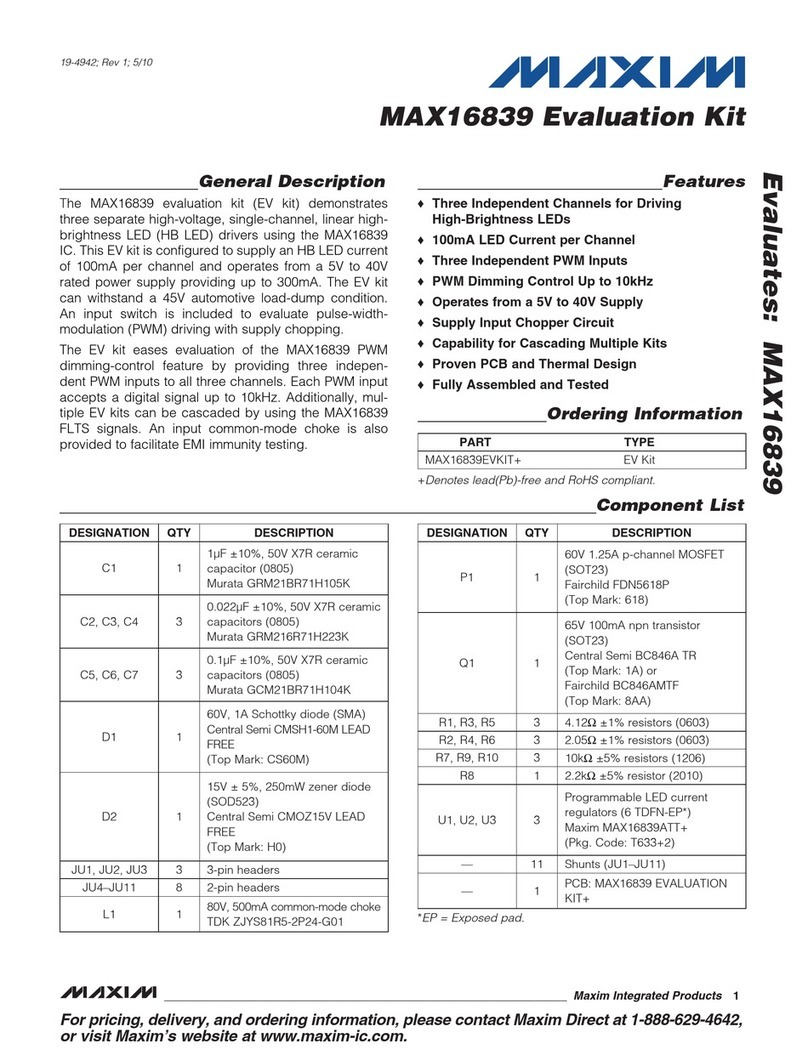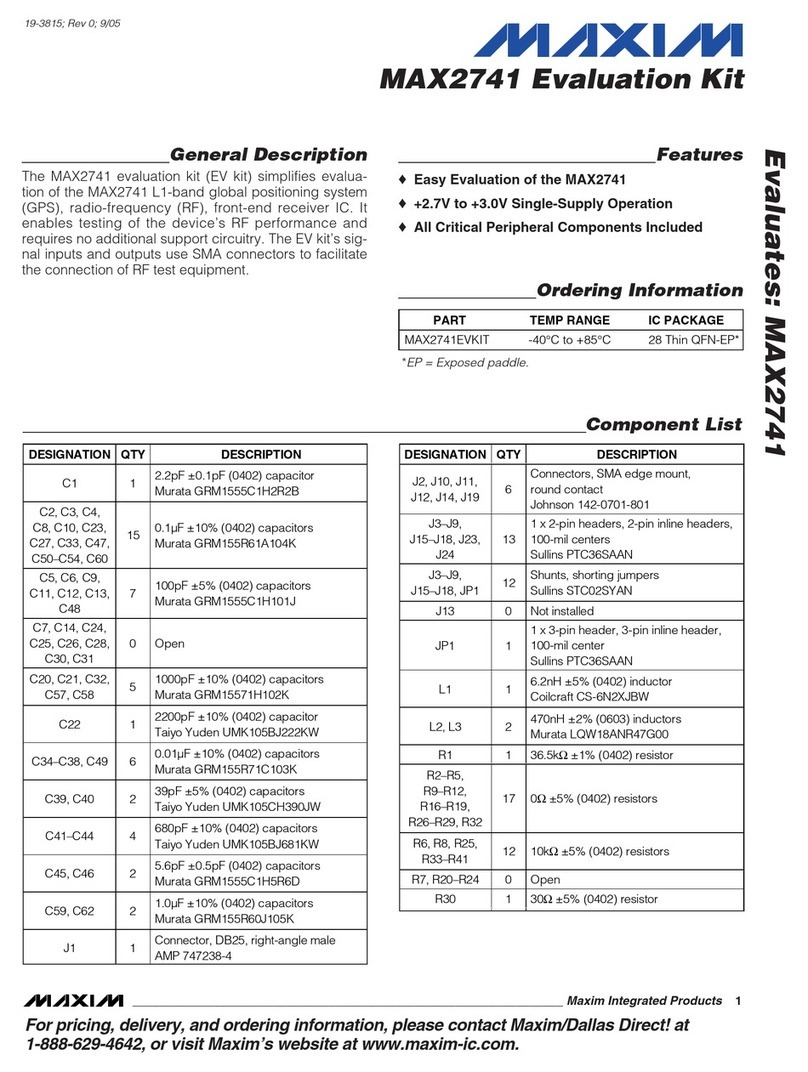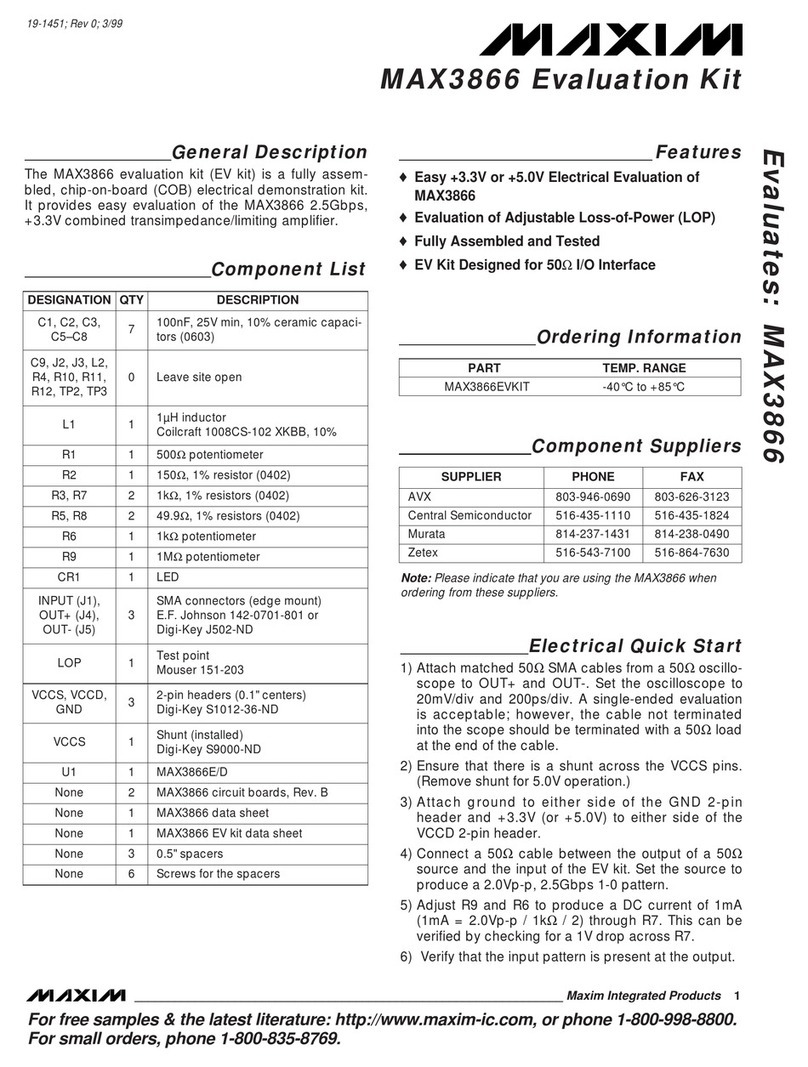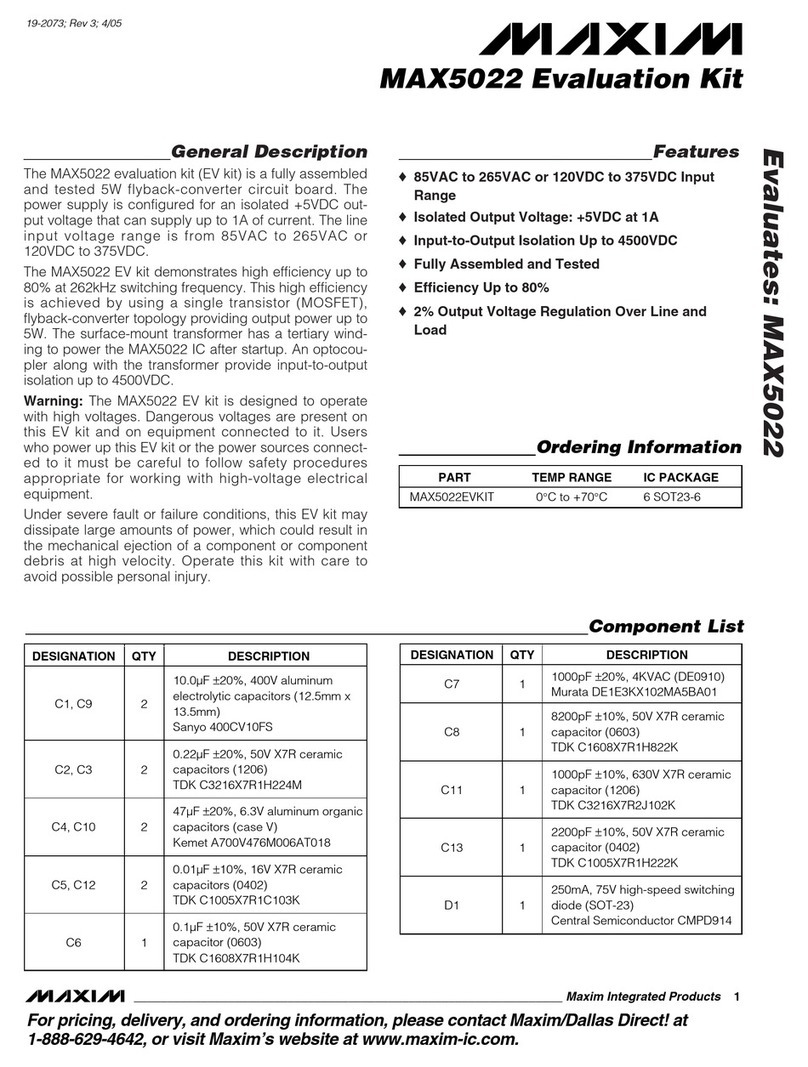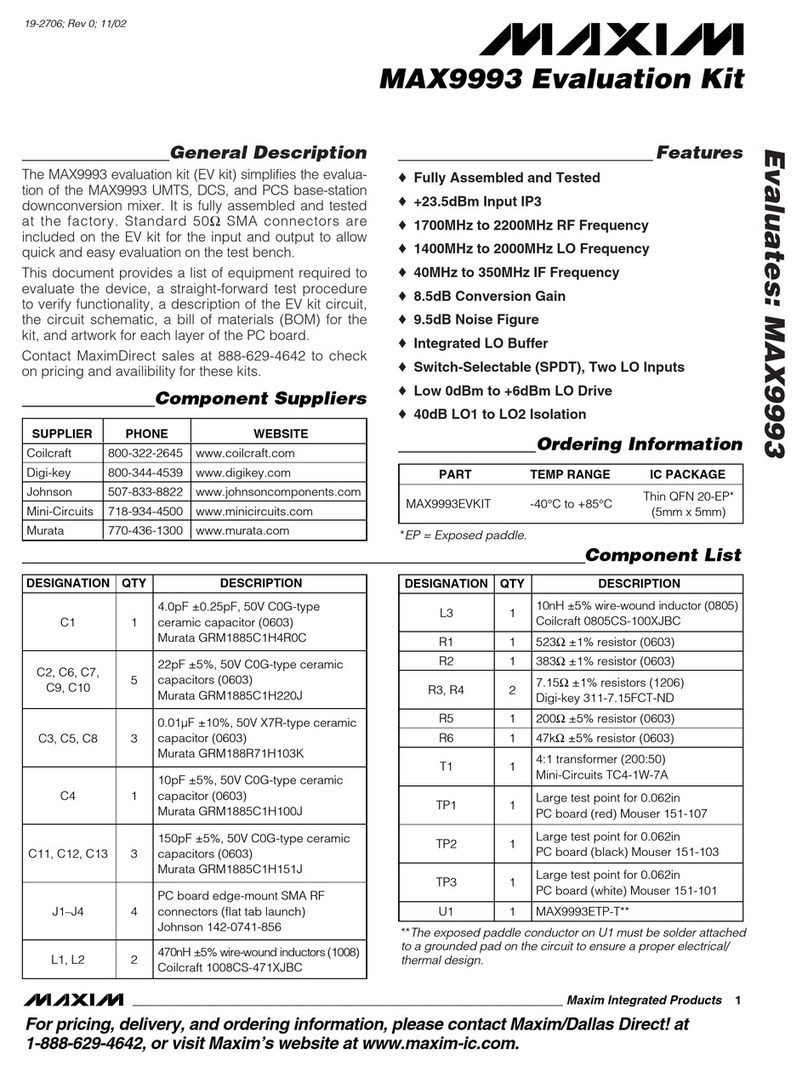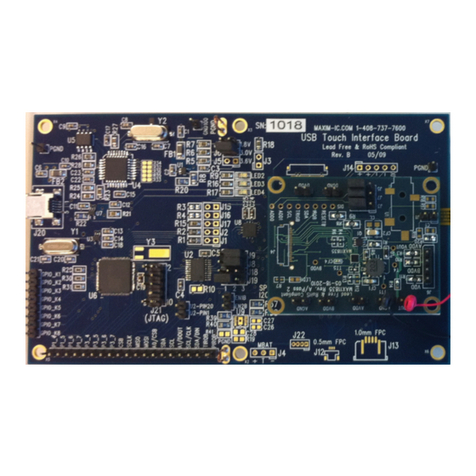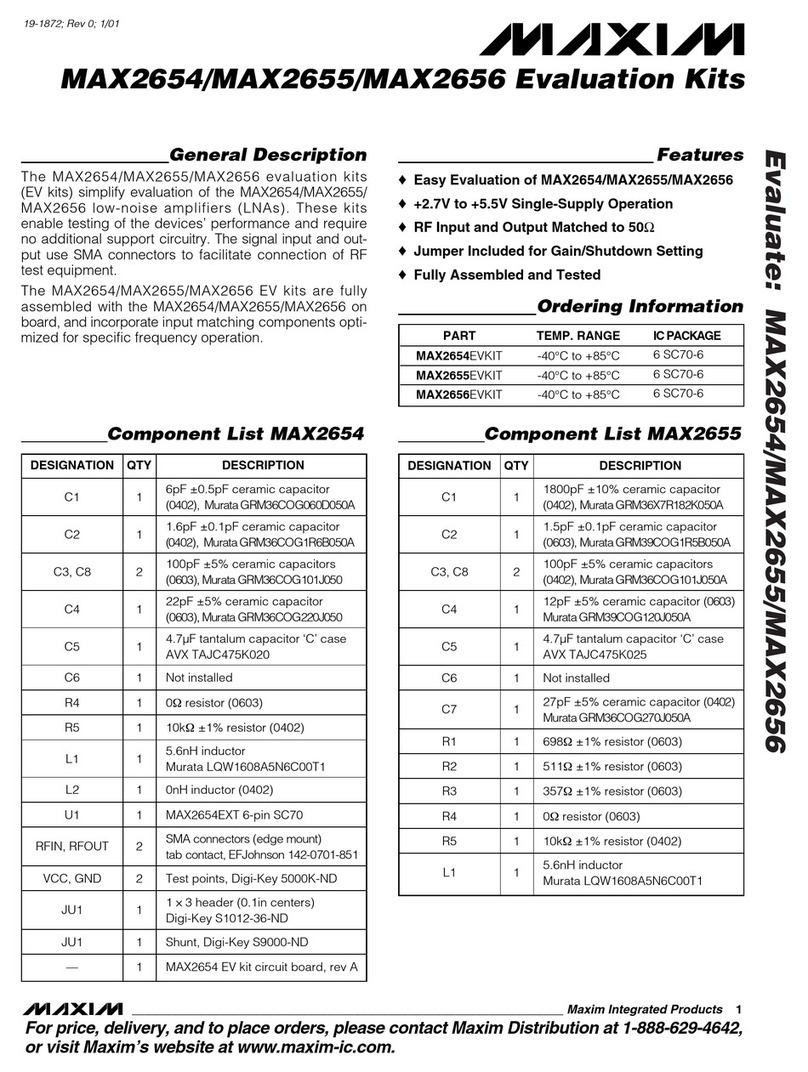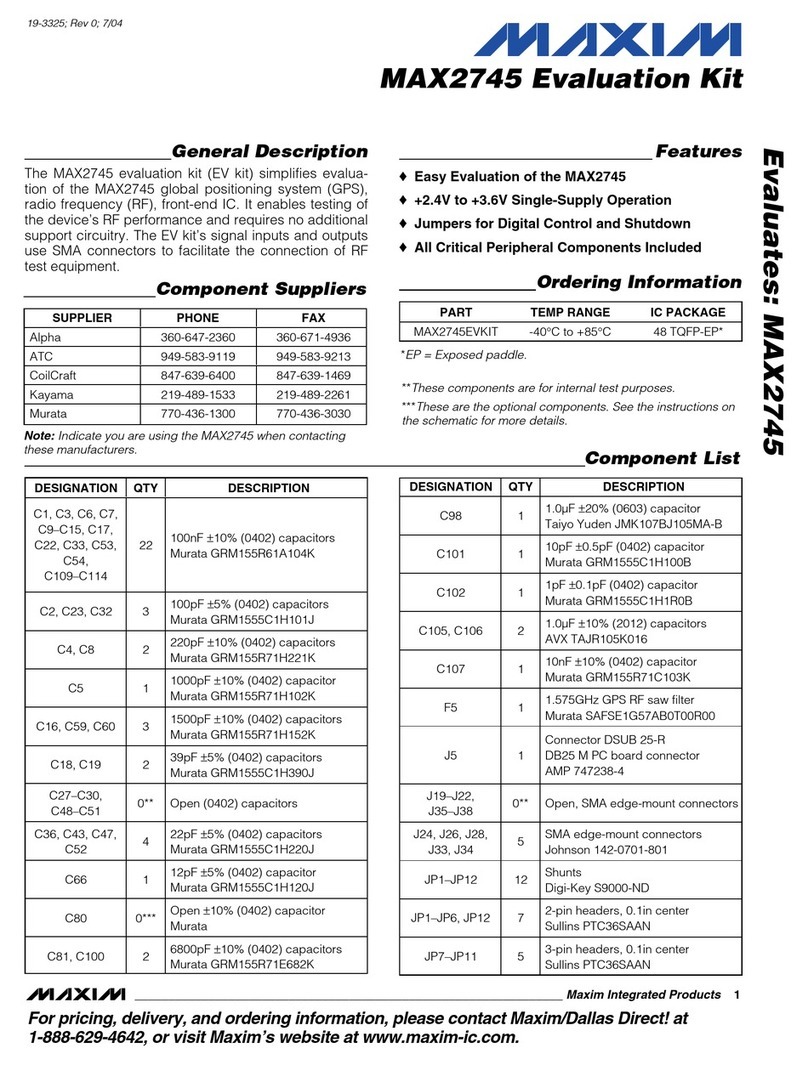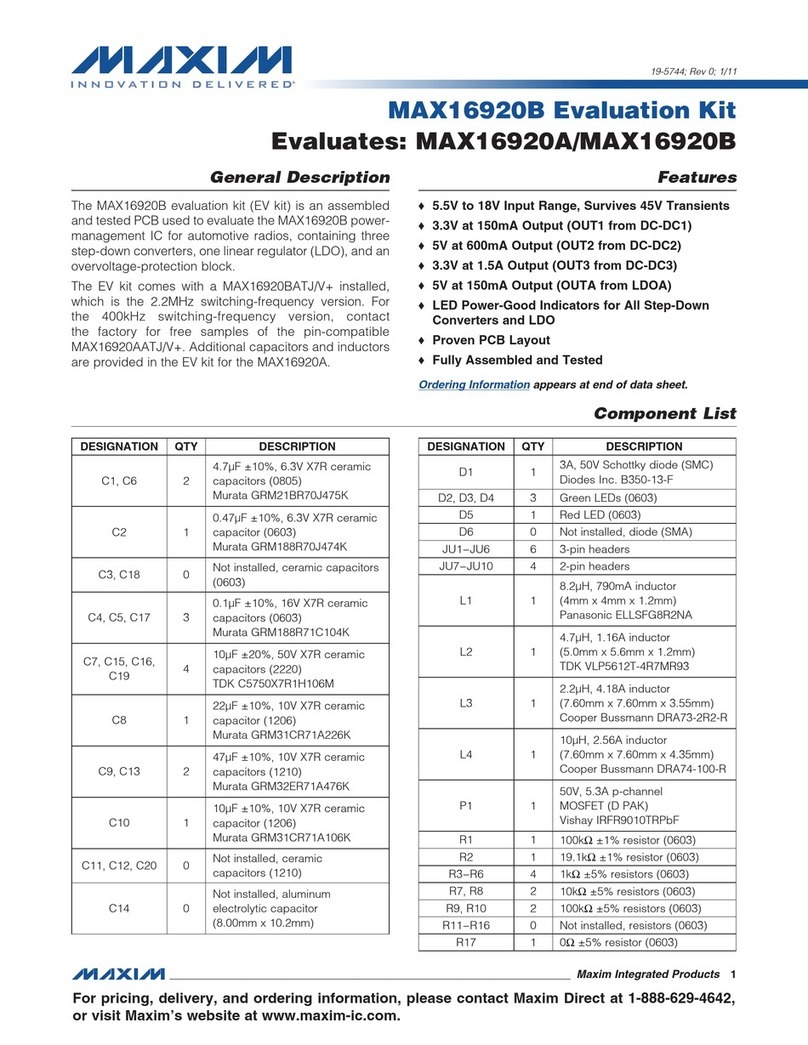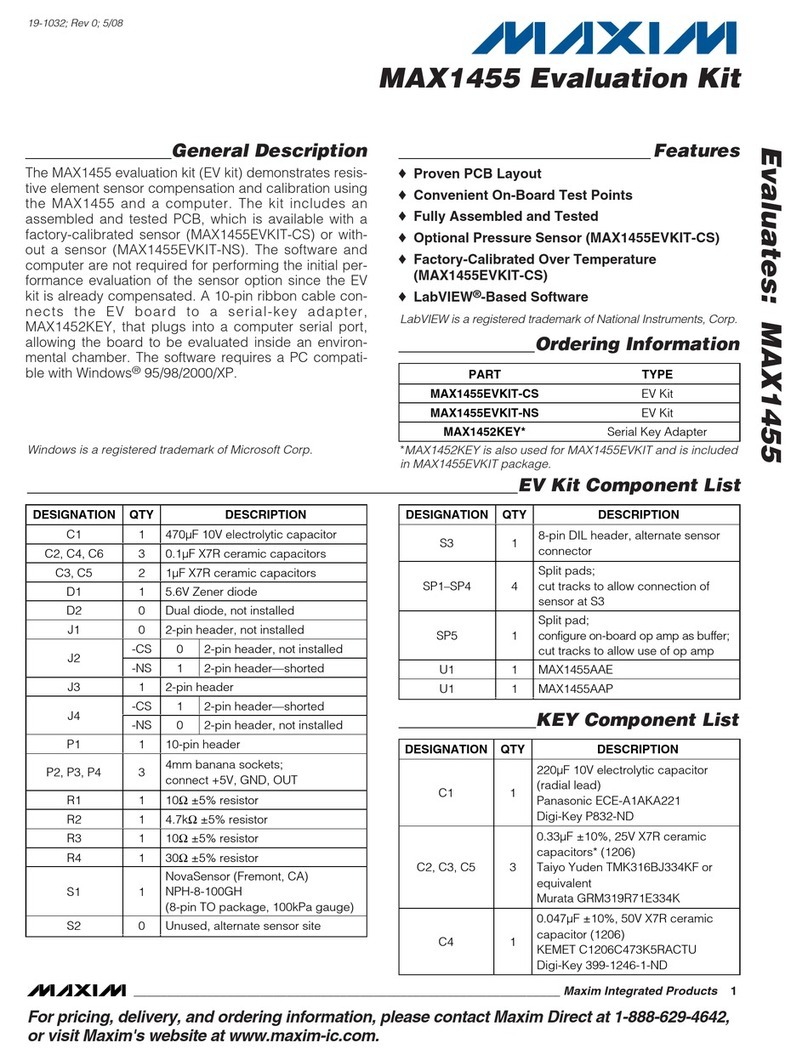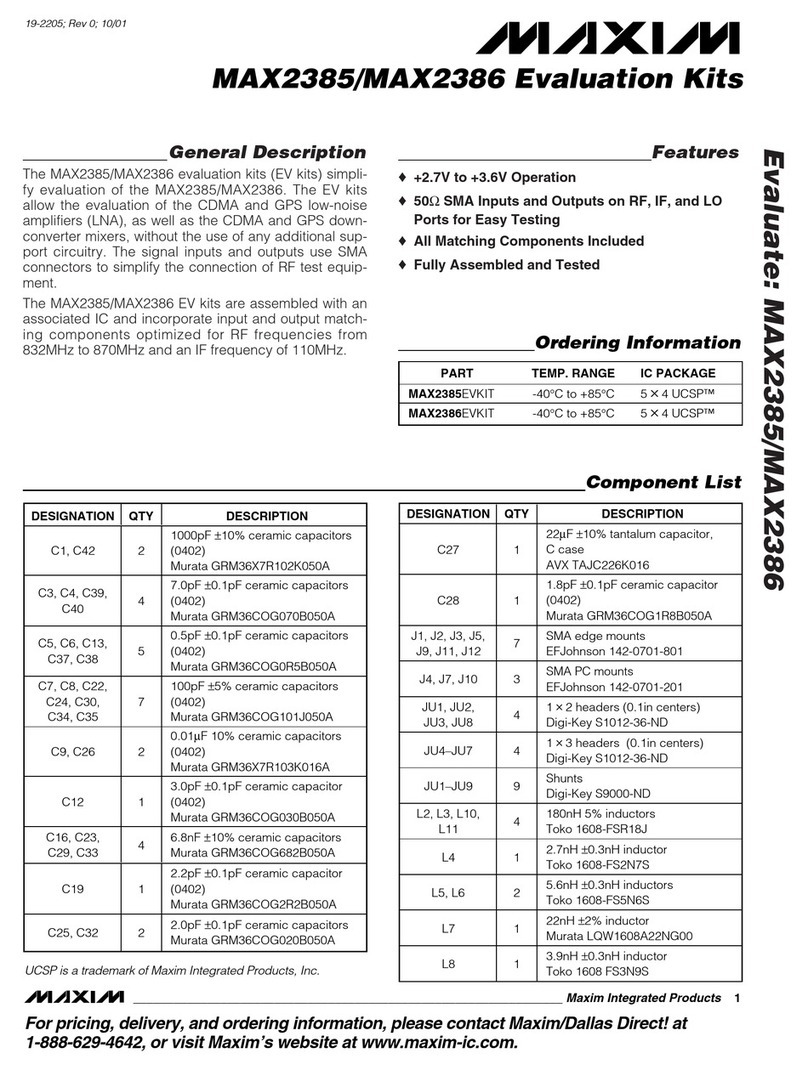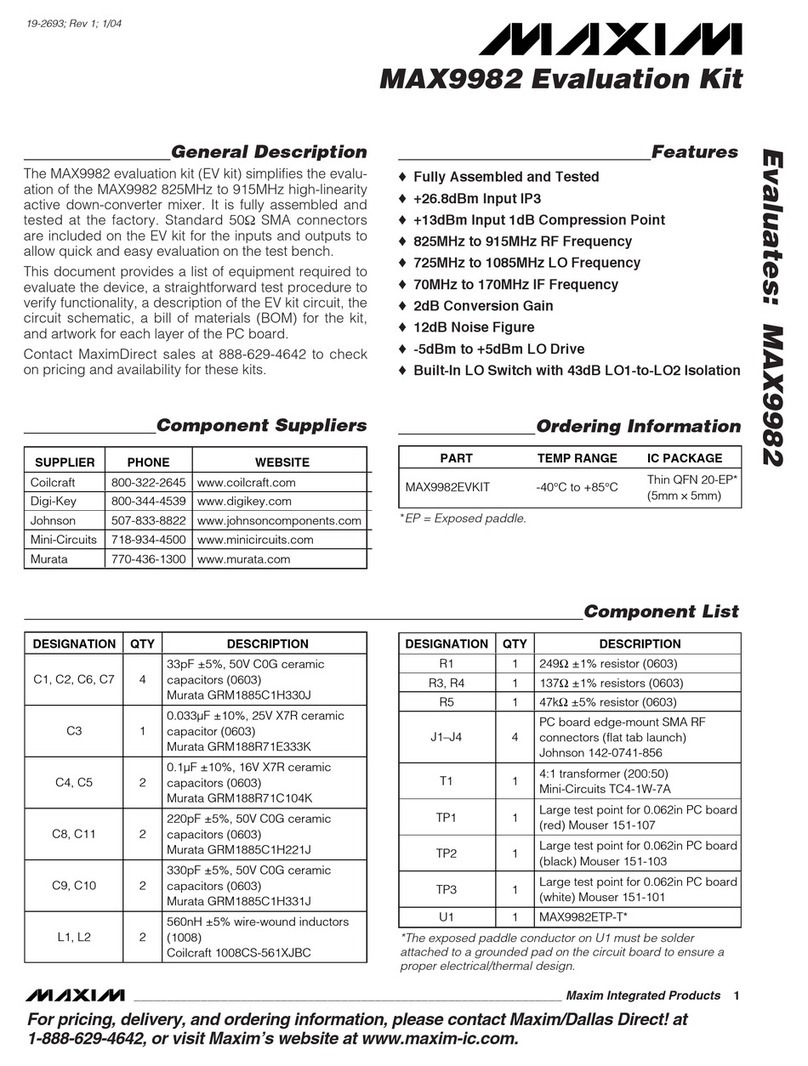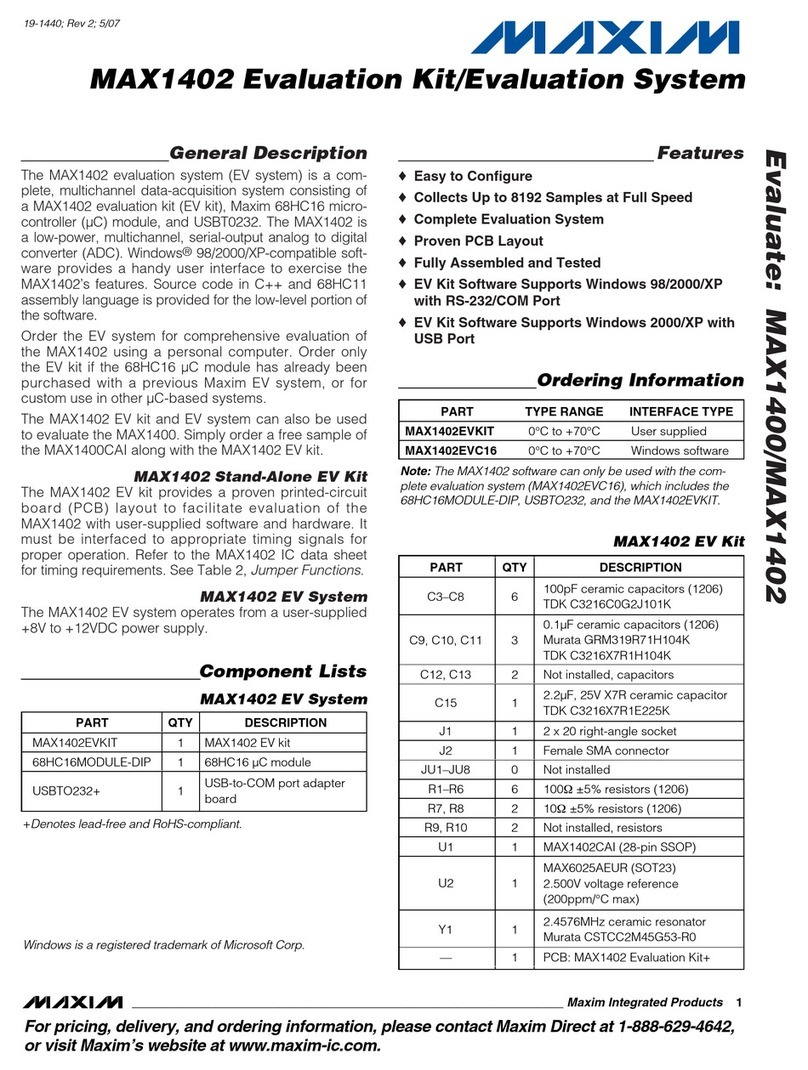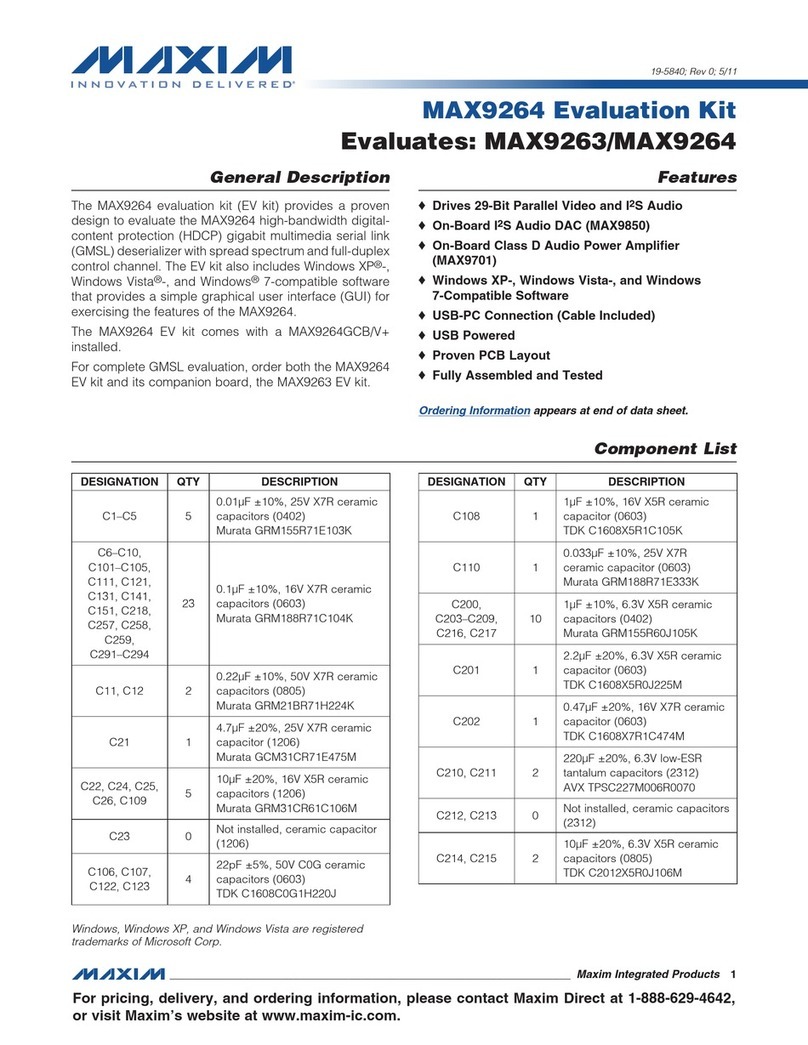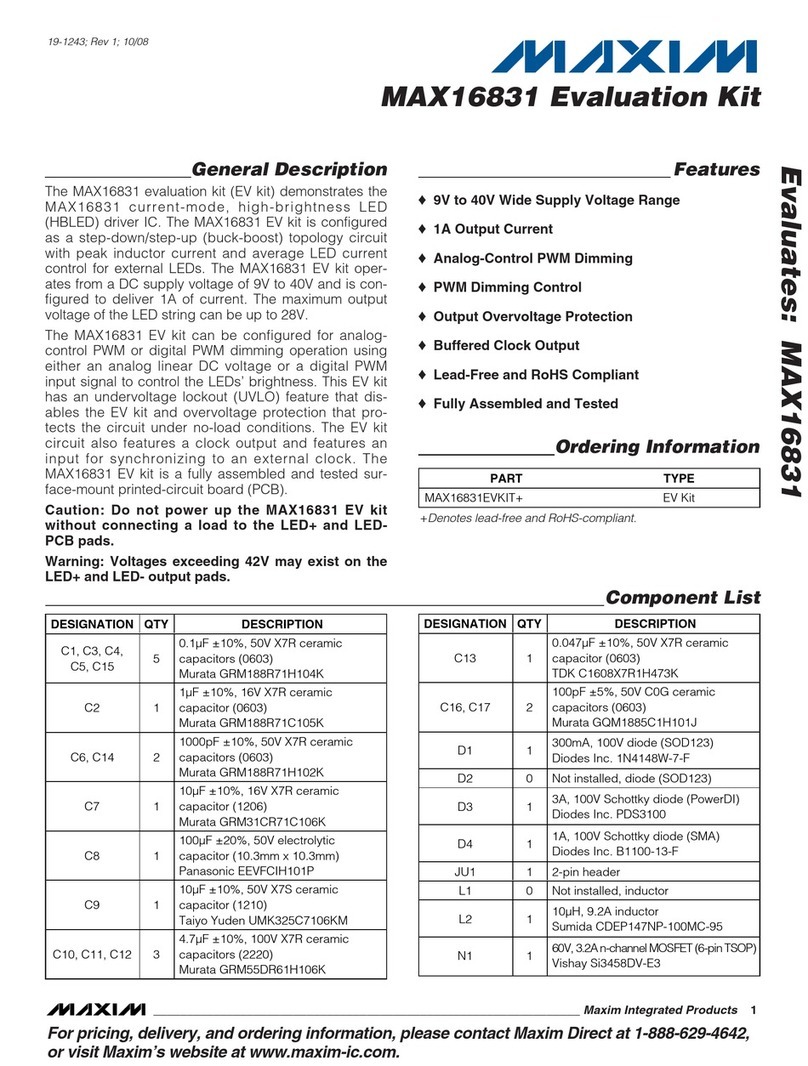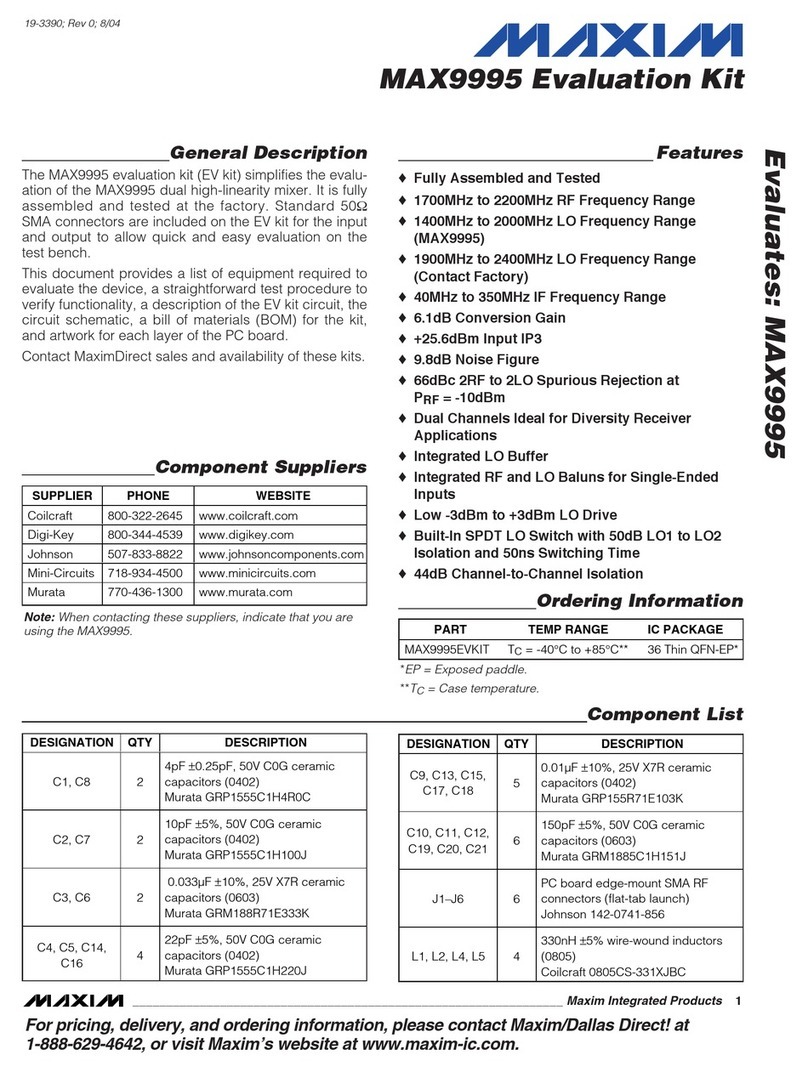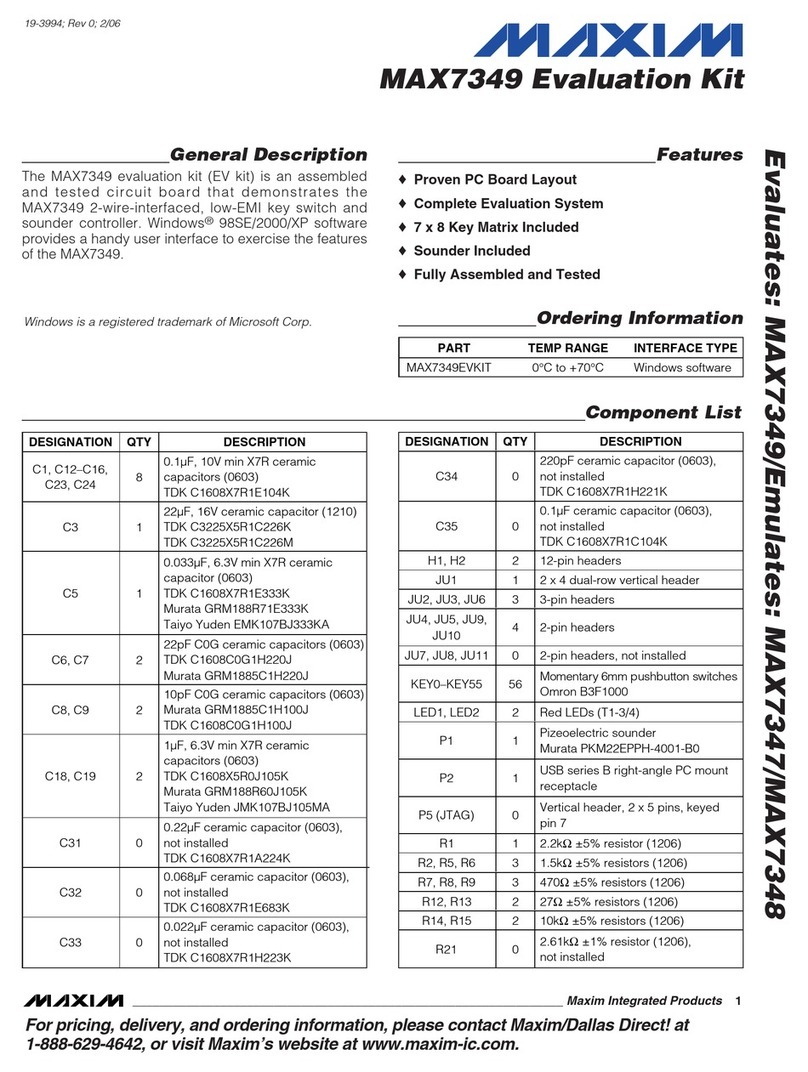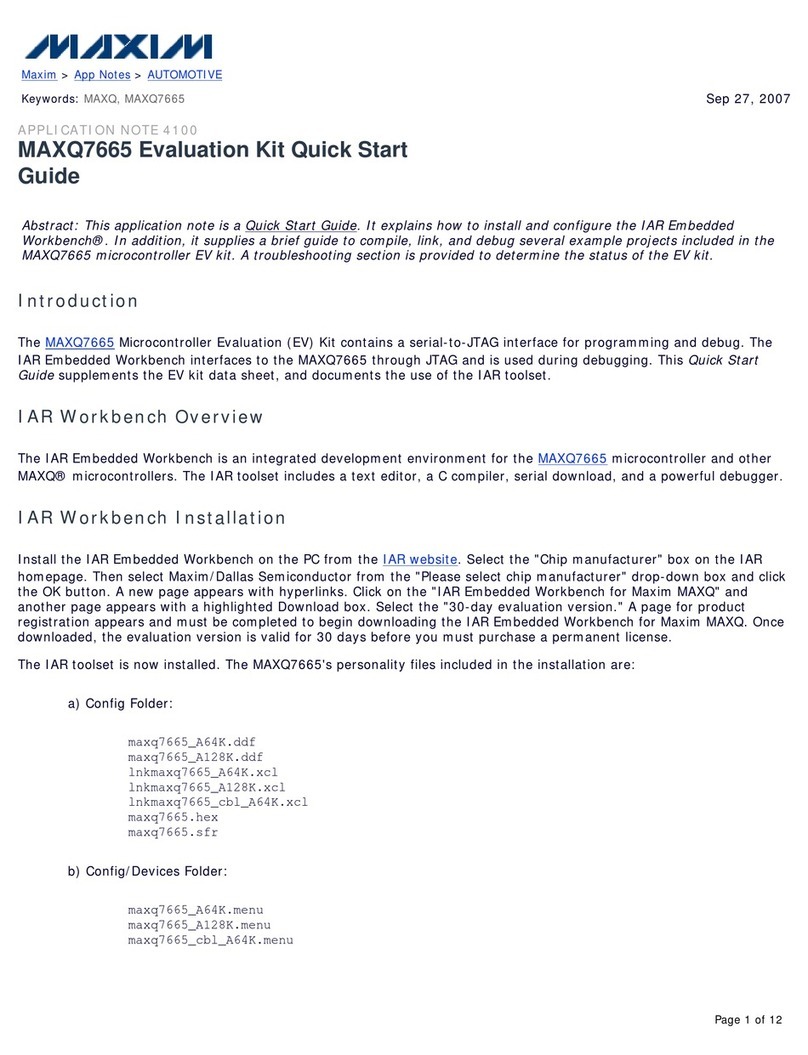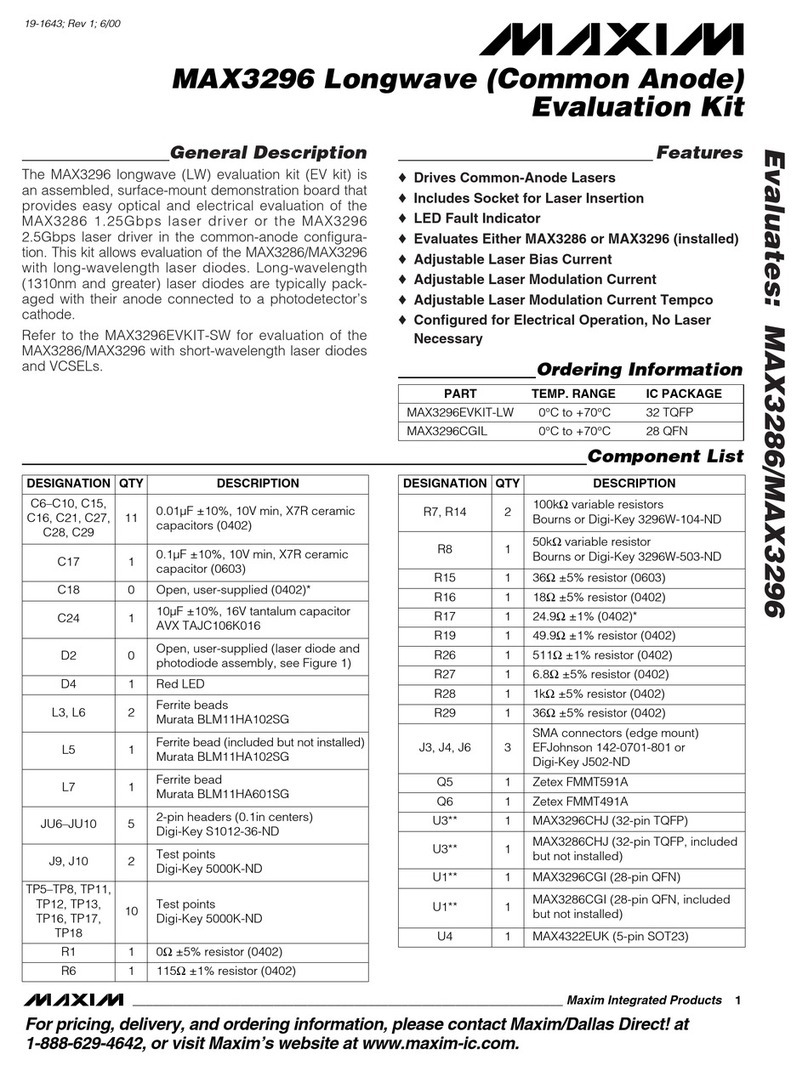
_________________________________________________________________ Maxim Integrated Products 9
MAX5971B Evaluation Kit
Evaluates: MAX5971B
The Locate Slave button is used to search for a device
located on the I2C serial interface whose address has
been changed while the software was running. The valid
IC slave addresses are configured by jumper JU7 to one
of four addresses: 0x40, 0x42, 0x44, or 0x46. The IC
does respond to global address 0x60, although the EV kit
hardware cannot be set to this specific address.
Record Macro State Controls
When the Record checkbox is checked, the program
automatically enters the record macro state and disables
certain buttons and menus. Selecting the Commands
| Clear Script Input menu item clears any script cur-
rently in the Macro script input edit field. Comment lines
in a macro script begin with a # / ; ' * character. A line
of script is entered by selecting the appropriate Slave
Address,Register Address, and entering the desired
Hexadecimal Data or Binary Data in the respective
combo box. Pressing the Write Byte or Read Byte but-
ton then enters the script into the Macro input edit field.
For time delays in a macro, select the desired delay
time from the combo box on the right side of the Delay
button and then press the Delay button. The macro must
be saved before exiting the record macro state using the
File | Save Macro menu item. The macro file must have
an smb file extension name.
To edit a previously saved macro, open the macro using
the File | Open Macro menu item and make the desired
edits. The modified file must be saved prior to exiting the
record macro state. Uncheck the Record checkbox to
exit the record macro state. Additionally, a macro can be
created or edited using a plan text editor in “text mode.”
The file must be saved with an smb extension.
General-Purpose Advanced
User Interface Utility
There are two methods for communicating with the
IC: through the main window display or through the
general-purpose Advanced User Interface utility using
the View | Interface menu item. The utility configures
the I2C interface parameters, such as start and stop
bits, acknowledgments, and clock timing. The 2-wire
interface tab (Figure 4) allows the user to send general-
purpose I2C commands using the SMBus-WriteByte/
ReadByte and WriteWord/ReadWord commands. For
more information on the differences between the I2C
interface and the SMBusKinterface, refer to Application
Note 476: Comparing the I2C Bus to SMBus, available
at www.maxim-ic.com. When using the Advanced
User Interface utility, the main window display no longer
keeps track of changes sent to hardware. The EV kit
can be reinitialized to the startup screen settings by first
closing the Advanced User Interface utility, resetting the
IC by pressing the reset pushbutton switch (SW1), and
relaunching the software.
The Hunt for active listeners button scans the entire
2-wire address space, reporting each address that
is acknowledged. The SMBusWriteByte transmits the
device address, command, and 1 byte of data. The
SMBusReadByte transmits the device address, com-
mand, and then retransmits the device address and
reads 1 byte of data. The SMBusWriteWord and
SMBusReadWord operate the same, except 2 bytes of
data are used.
General Troubleshooting
Problem: Software reports it cannot find the USB
interface circuit.
• IstheUSBcommunicationscableconnected?
• IstheUSBinterfacecircuitpowerLED(D201)lit?
• Has Windows plug-and-play detected the board?
Bring up Control Panel →System →Device Manager,
and look at what device nodes are indicated for the
USB. If there is an unknown device node attached to
the USB, delete it—this forces plug-and-play to try
again.
Problem: Software reports MAX5971B IC not found,
exiting program.
• AretheOPTO_SCLandOPTO_SDAsignalspulledup
toOPTO_VCC(3.3V)?
• If using jumper wires to connect, could the OPTO_
SCLandOPTO_SDAsignalsbeswapped?Couldthe
OPTO_GNDgroundreturnbemissing?
Detailed Description of Hardware
The MAX5971B EV kit features a 10/100/1000BASE-
TX Ethernet single-port PSE controller circuit for -54V
supply rail systems. The EV kit’s PSE circuit uses the
IEEE 802.3af/at-compliant MAX5971B PSE controller
featuring an integrated n-channel power MOSFET and an
on-board single 1Gb x 1Gb MagJack module (integrated
in J2) to form the basic portion of a PSE circuit. The EV
kit has been designed as an IEEE 802.3af/at-compliant
PSE and demonstrates all the required functions such
as PD discovery, classification, current-limit control of
a connected PD at the Ethernet output port, and AC-/
DC-disconnect detection. A PC can be used to commu-
nicate with the slave device over the I2C interface, opti-
cally coupled logic, and the 2-wire-to-USB-port interface
circuit.
The EV kit PSE circuit requires a -32V to -60V power
supply (-54V supply rail) capable of supplying 1A or
more to the EV kit’s GND and VEE metal banana jacks or
SMBus is a trademark of Intel Corp.
Downloaded from Elcodis.com electronic components distributor
